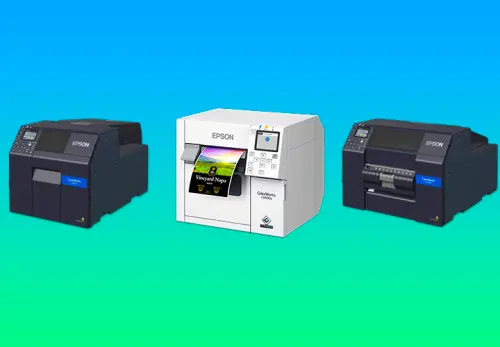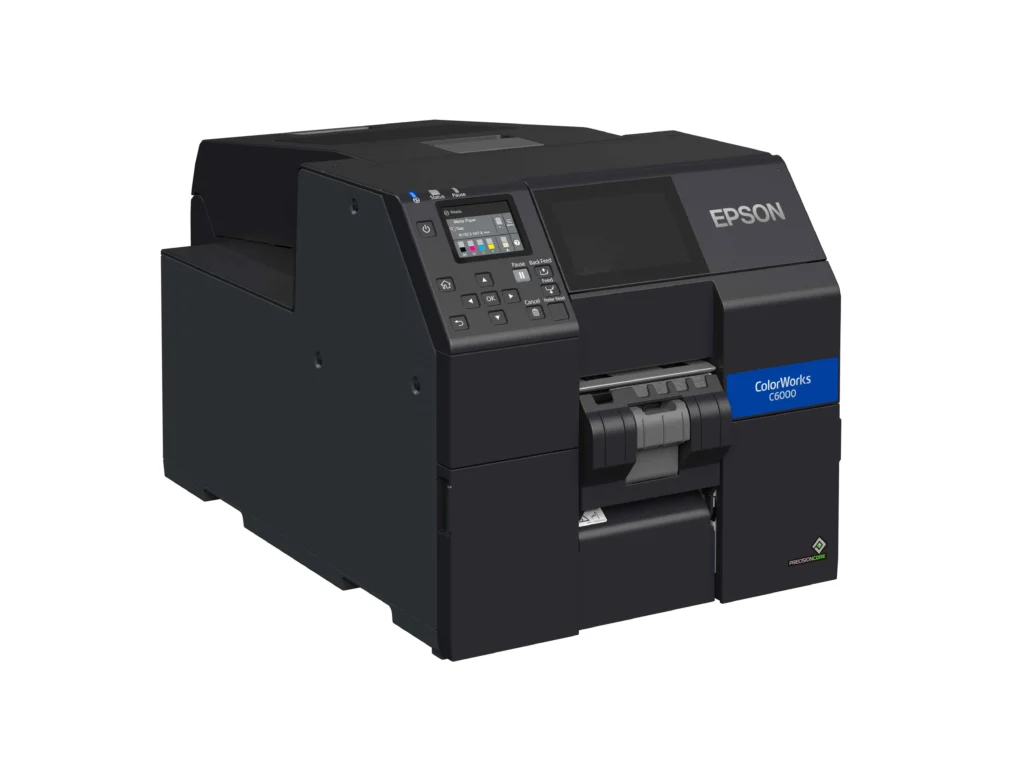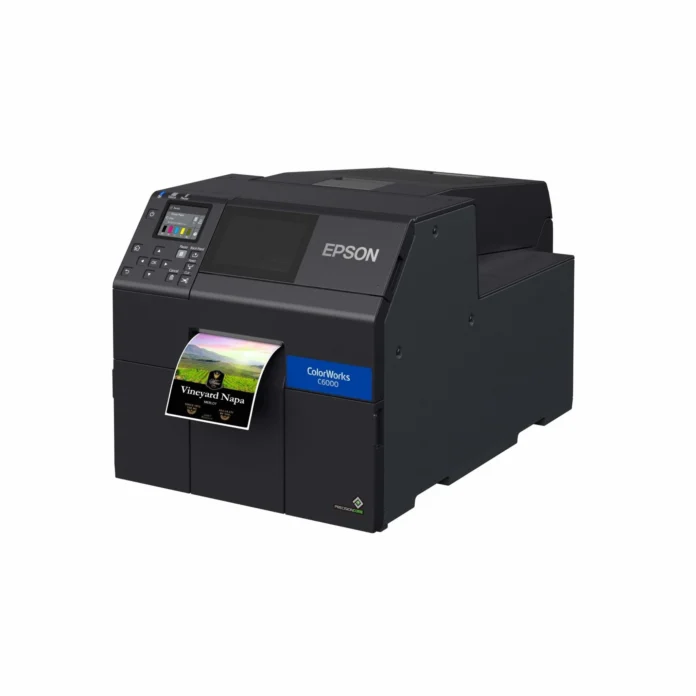In the competitive world of small business, first impressions matter. Color label printers can be a game-changer, providing professional, eye-catching labels that enhance your product presentation and streamline operations. Whether you’re looking to improve branding, increase efficiency, or ensure your products stand out, investing in the right color label printer is essential. Dive into our guide to discover the best options and key considerations for choosing the perfect color label printer for your small business needs.
Benefits of Using Color Label Printers
Color label printers offer transformative benefits for small businesses, making them an essential tool for those looking to enhance efficiency and product presentation.
Streamlining Business Operations
One of the primary advantages of color label printers is their ability to streamline business operations. Here’s how:
1. On-Demand Printing: With color label printers, you can print labels as needed, reducing waste and ensuring that labels are always up-to-date with current branding and product information. This on-demand capability is particularly beneficial for businesses with a diverse product line or those that frequently update their offerings.
2. Time Efficiency: Color label printers reduce the time spent on manual labeling. Automated printing processes allow staff to focus on other critical tasks, thereby increasing overall productivity. For instance, a small bakery can quickly print labels for different baked goods instead of hand-labeling each product, freeing up time for baking and customer service.
3. Inventory Management: By printing barcodes and QR codes, color label printers enhance inventory tracking and management. This functionality helps businesses maintain accurate stock levels and streamline the reordering process. For example, a small retail store can use color-coded labels to easily identify and manage inventory, preventing stockouts and overstock situations.
Enhancing Product Presentation
In addition to operational benefits, color label printers significantly enhance product presentation, which is crucial for attracting and retaining customers.
1. Professional Appearance: High-quality, vibrant labels give products a professional look that can boost brand image. A well-designed label can make products stand out on crowded shelves, increasing the likelihood of catching a customer’s eye. For instance, a small cosmetics brand can use a color label printer to create sleek, attractive labels that convey luxury and quality.
2. Customization: Color label printers offer the flexibility to customize labels with intricate designs, logos, and color schemes that align with your brand identity. This customization helps create a cohesive brand experience across all products. For example, a local coffee shop can print custom labels for different coffee blends, each reflecting the unique flavor profile and origin of the beans.
3. Improved Readability: Color labels enhance readability by using different colors to highlight important information such as ingredients, usage instructions, or promotional messages. This not only makes the product more user-friendly but also ensures compliance with labeling regulations. For instance, a small food producer can use color labels to clearly distinguish between different flavors and highlight allergen information, making it easier for customers to make informed choices.
Top Color Label Printers for Small Business
When it comes to choosing the best color label printer for your small business, there are several exceptional options available. Below, we provide an overview of some of the top color label printers, highlighting their key features, benefits, and why they are ideal for small businesses.
1. Epson® ColorWorks C6000
Key Features:
- High-resolution printing (up to 1200 dpi)
- Supports a wide range of media types and sizes
- Fast print speeds of up to 5 inches per second
- Automatic cutter for precise label cutting
Benefits:
The Epson® ColorWorks C6000 is known for its high-resolution printing, which ensures that every label is crisp and clear. Its ability to handle various media types and sizes makes it versatile, accommodating diverse labeling needs. The fast print speeds and automatic cutter further enhance efficiency, making it a practical choice for small businesses that require high-quality, on-demand labels.
Why It’s Suitable for Small Businesses:
This printer is perfect for small businesses that need to produce professional-grade labels quickly and efficiently. Its flexibility and high resolution make it ideal for industries such as food and beverage, retail, and pharmaceuticals.
2. Epson ColorWorks C6500
Key Features:
- Print widths up to 8 inches
- High-speed printing up to 5 inches per second
- Integrated peel-and-present function
- Durable, waterproof, and smudge-proof labels
Benefits:
The Epson ColorWorks C6500 offers wide-format printing capabilities, which is excellent for larger labels. The integrated peel-and-present function streamlines the labeling process, while the durability of the labels ensures longevity even in challenging environments.
Why It’s Suitable for Small Businesses:
Small businesses that need larger labels or operate in harsh environments will find the Epson ColorWorks C6500 highly beneficial. Its robust features make it suitable for manufacturing, warehousing, and logistics sectors.
3. DYMO LabelWriter® 4XL
Key Features:
- Direct thermal printing technology
- Prints labels up to 4 inches wide
- High-speed printing up to 53 labels per minute
- Compatible with popular e-commerce platforms
Benefits:
The DYMO LabelWriter® 4XL is renowned for its speed and ease of use. Its direct thermal printing technology eliminates the need for ink or toner, lowering operating costs. Compatibility with e-commerce platforms makes it ideal for businesses involved in online sales.
Why It’s Suitable for Small Businesses:
This printer is a great choice for small e-commerce businesses that need to print shipping labels quickly and cost-effectively. Its high speed and broad compatibility facilitate seamless order fulfillment.

4. Brother QL Wi-Fi Label Printer
Key Features:
- Wireless connectivity
- High-resolution printing
- Prints up to 110 standard address labels per minute
- Versatile label sizes
Benefits:
The Brother QL Wi-Fi Label Printer offers wireless convenience, allowing you to print from various devices without cumbersome cables. Its high-resolution capabilities ensure that every label looks professional, and its versatility in label sizes supports a wide range of applications.
Why It’s Suitable for Small Businesses:
Ideal for small office environments, this printer helps streamline operations with its fast printing and wireless connectivity. It’s perfect for businesses that need flexibility and efficiency in their labeling processes.
5. Zebra ZSB Wireless Label Printer
Key Features:
- Cloud-based printing
- Prints labels up to 2.25 inches wide
- Eco-friendly, recyclable label cartridges
- User-friendly interface
Benefits:
The Zebra ZSB Wireless Label Printer stands out with its cloud-based printing capabilities, enabling remote printing from anywhere. The eco-friendly cartridges are a bonus for businesses looking to reduce their environmental footprint.
Why It’s Suitable for Small Businesses:
This printer is excellent for small businesses prioritizing sustainability and needing remote printing solutions. Its user-friendly interface makes it easy to integrate into any business operation.
What to Consider When Choosing a Color Label Printer
Selecting the right color label printer for your small business is crucial to ensure that it meets your specific needs and enhances your operations. Here are some key factors to consider:
Print Quality
Importance:
High print quality is essential for creating professional and attractive labels. It ensures that your labels are clear, vibrant, and easy to read, which can significantly impact your product presentation and brand image.
Considerations:
- Resolution: Look for printers with high DPI (dots per inch). A minimum of 300 DPI is adequate for most applications, but 600 DPI or higher is ideal for intricate designs and small text.
- Color Accuracy: Ensure the printer can accurately reproduce colors to match your brand’s palette. This is particularly important for businesses in the food, cosmetics, and retail sectors, where visual appeal can influence purchasing decisions.
Example: The Epson® ColorWorks C6000, with its 1200 DPI resolution, provides exceptional print quality suitable for detailed and vibrant label designs.
Print Speed
Importance:
Print speed affects how quickly you can produce labels, which is critical for businesses with high labeling demands or those needing quick turnaround times.
Considerations:
- Labels Per Minute (LPM): Assess how many labels the printer can produce per minute. High-speed printers can improve efficiency and reduce bottlenecks in your labeling process.
- Batch Printing: Some printers offer batch printing capabilities, allowing you to print multiple labels simultaneously without manual intervention.
Example: The DYMO LabelWriter® 4XL can print up to 53 labels per minute, making it an excellent choice for small e-commerce businesses that need to produce shipping labels quickly.
Connectivity Options
Importance:
Connectivity options determine how easily you can integrate the printer into your existing workflow and how flexible it is in terms of location and device compatibility.
Considerations:
- Wi-Fi and Ethernet: Wireless and wired network options enable multiple devices to connect to the printer, facilitating seamless operations in an office or retail environment.
- USB and Bluetooth: These options provide direct connections to specific devices, offering versatility and ease of use.
- Cloud-Based Printing: Some modern printers support cloud-based printing, allowing you to print from remote locations or multiple devices without being physically near the printer.
Example: The Brother QL Wi-Fi Label Printer offers wireless connectivity, making it convenient for businesses that need to print from various devices without dealing with cables.
Label Size and Variety
Importance:
The ability to print different label sizes and types is vital for businesses with diverse product ranges and labeling needs.
Considerations:
- Maximum and Minimum Label Width: Ensure the printer can handle the smallest and largest labels you need.
- Media Compatibility: Check if the printer can print on various materials like paper, synthetic, or waterproof labels, depending on your requirements.
- Customization: Look for printers that allow for custom label sizes and designs to match specific products and branding.
Example: The Epson ColorWorks C6500 supports print widths up to 8 inches, making it suitable for businesses that require larger labels for products or packaging.
Cost
Importance:
Cost is a significant factor, especially for small businesses that need to manage expenses carefully. Consider both the initial purchase price and ongoing operational costs.
Considerations:
- Initial Investment: Evaluate the upfront cost of the printer and whether it fits within your budget.
- Operational Costs: Consider the cost of consumables such as ink, toner, and label materials. Also, factor in maintenance and potential repairs.
- Economy of Scale: High-volume printers may have a higher initial cost but lower long-term expenses due to bulk printing efficiencies.
Example: The DYMO LabelWriter® 4XL uses direct thermal printing technology, which eliminates the need for ink or toner, reducing ongoing operational costs.

How to Get Started with Your New Color Label Printer
So, you’ve chosen the perfect color label printer for your small business. Now, it’s time to set it up and start reaping the benefits. Follow these step-by-step instructions to get started:
Unboxing Your Printer
- Check the Contents:
- Ensure that all components are included as listed in the user manual. Typically, the box should contain the printer, power cable, USB cable, installation CD or a link to download software, and starter label rolls.
- Inspect for Damage:
- Carefully inspect the printer and its components for any damage that may have occurred during shipping. Contact the supplier if you find any issues.
Installation
- Find the Right Location:
- Place the printer on a stable, flat surface near a power outlet. Ensure there is enough space around the printer for ventilation and easy access.
- Connect the Power:
- Plug the power cable into the printer and then into an electrical outlet. Turn on the printer using the power button.
- Connect to Your Device:
- Depending on the connectivity options available (USB, Wi-Fi, Ethernet, etc.), connect the printer to your computer or network. For USB connections, plug the USB cable into the printer and your computer. For wireless setup, follow the printer’s manual to connect to your Wi-Fi network.
Software Setup
- Install the Drivers:
- Insert the installation CD or download the drivers from the manufacturer’s website. Follow the on-screen instructions to install the necessary software and drivers.
- Configure the Printer:
- Open the printer settings on your computer and configure the printer preferences, such as paper size, print quality, and label orientation.
- Install Labeling Software:
- Many printers come with proprietary labeling software that offers advanced design and printing features. Install this software and familiarize yourself with its interface and functionalities.
Initial Printing
- Load the Labels:
- Open the printer’s label compartment and load the label roll, ensuring it is aligned correctly. Follow the manual to feed the labels through the printer.
- Print a Test Label:
- Use the labeling software to design a simple label and print a test label to ensure everything is functioning properly. Check for print quality, alignment, and clarity.
- Adjust Settings if Needed:
- If the test print is not satisfactory, adjust the printer settings such as print density, speed, and alignment. Refer to the user manual for guidance on making these adjustments.
Troubleshooting Common Issues
- Paper Jams:
- If the printer experiences a paper jam, turn off the printer and gently remove the jammed label. Ensure the labels are loaded correctly and that the roll is not too tight.
- Poor Print Quality:
- Check if the print head needs cleaning. Most printers have a built-in cleaning function accessible through the printer settings. Also, ensure you are using the correct type of labels for your printer.
- Connectivity Issues:
- Ensure all cables are securely connected. For wireless printers, check the network connection and restart the printer and router if necessary.
Optimizing Printer Performance
- Regular Maintenance:
- Perform regular maintenance tasks such as cleaning the print head and rollers. Refer to the maintenance section of your printer’s manual for detailed instructions.
- Software Updates:
- Keep your printer’s firmware and software up to date to benefit from the latest features and improvements. Check the manufacturer’s website periodically for updates.
- Use Quality Supplies:
- Always use high-quality label rolls and ink (if applicable) recommended by the manufacturer. This ensures optimal performance and longevity of your printer.
Conclusion
Selecting the right color label printer is a critical step for any small business aiming to enhance efficiency and product presentation. The right printer can offer high-quality labels, streamline operations, and ultimately, boost customer satisfaction. By considering factors such as print quality, speed, connectivity options, label size variety, and cost, small business owners can make informed decisions that best meet their needs. Investing in a suitable color label printer will not only elevate your brand’s image but also contribute to smoother and more effective business processes. Take the time to assess your requirements and choose a printer that will help your business thrive.




